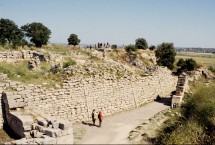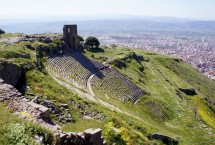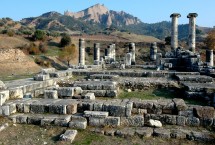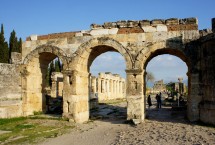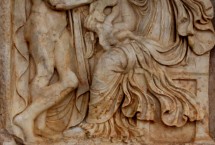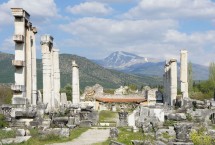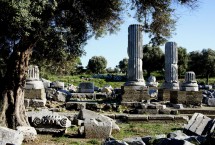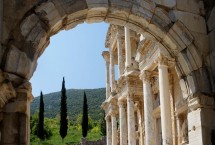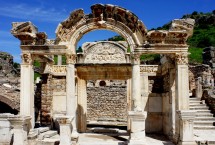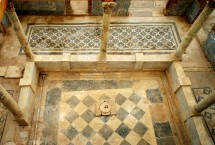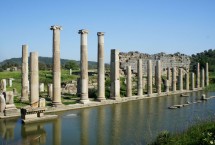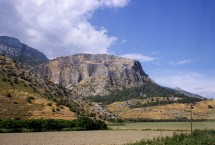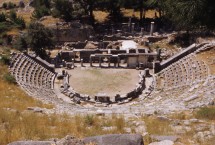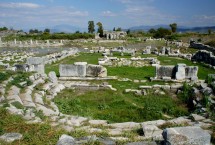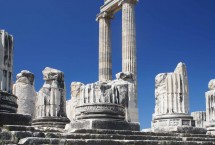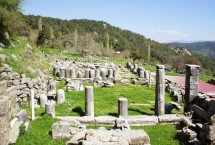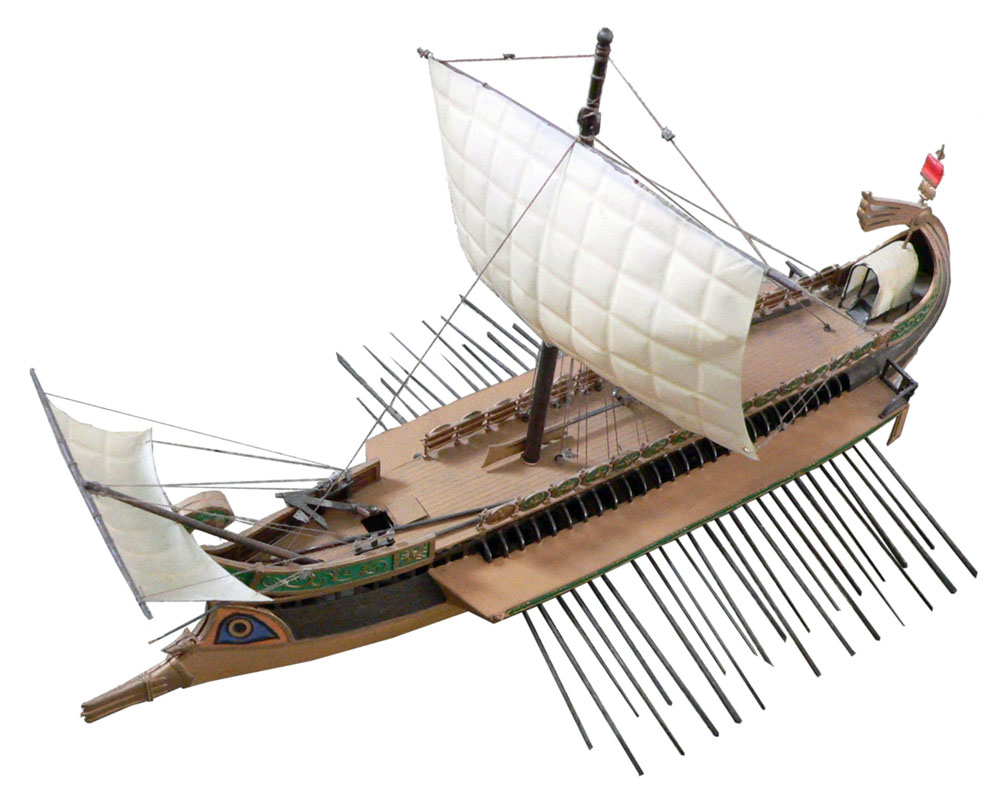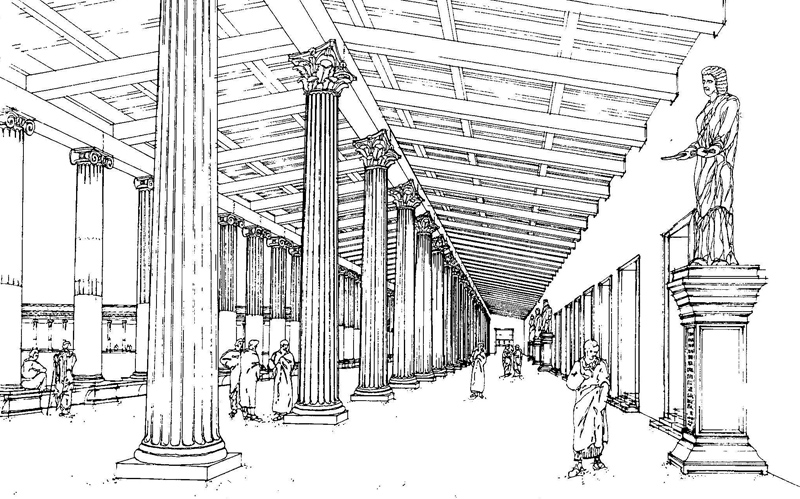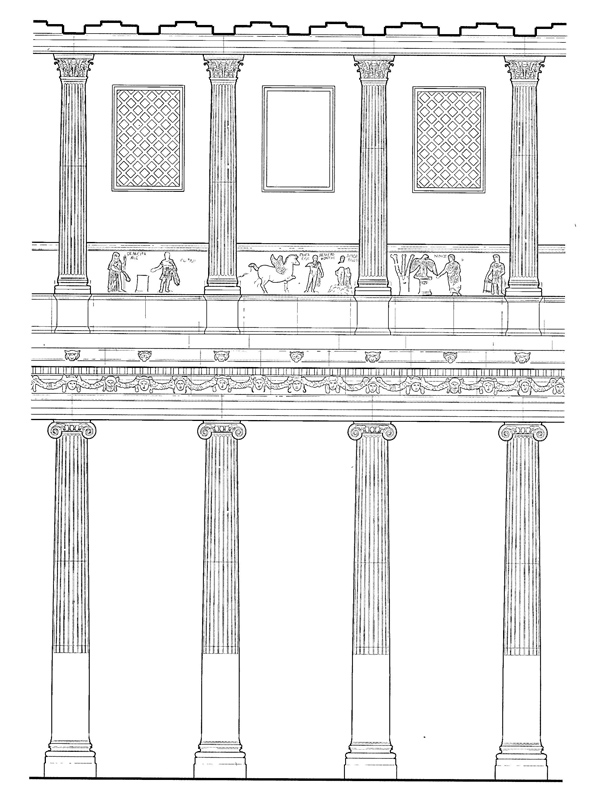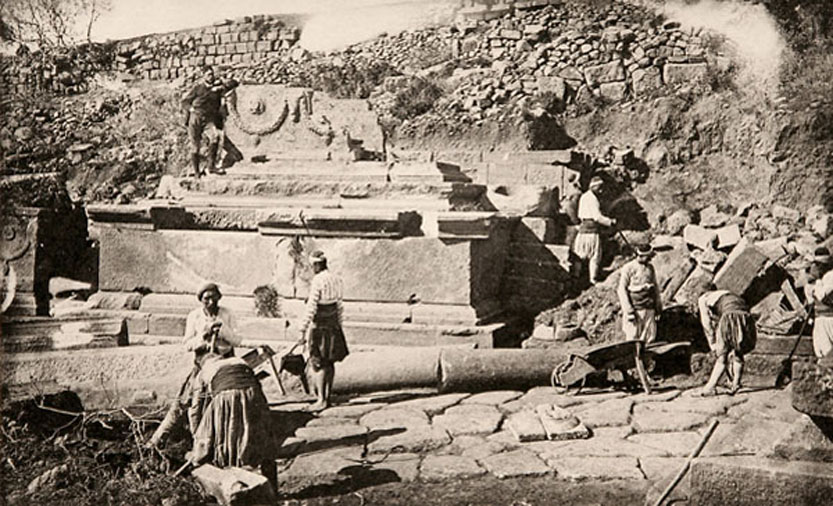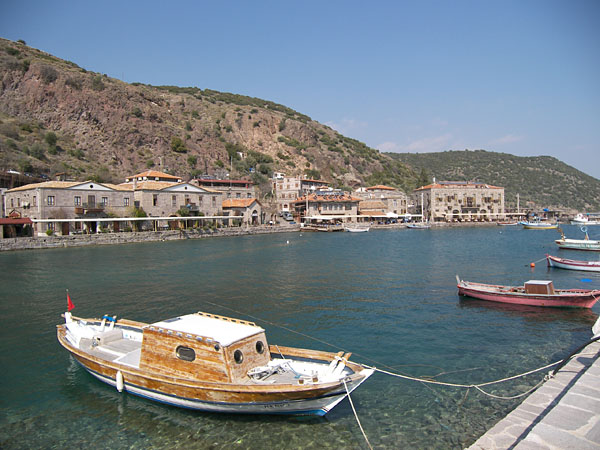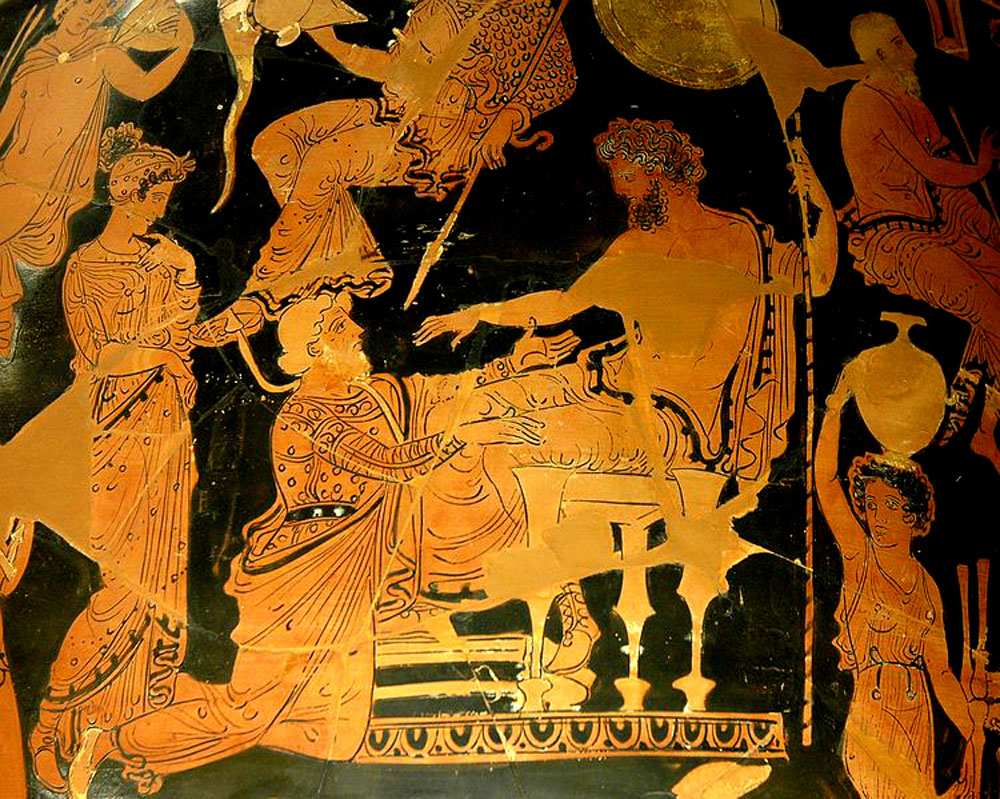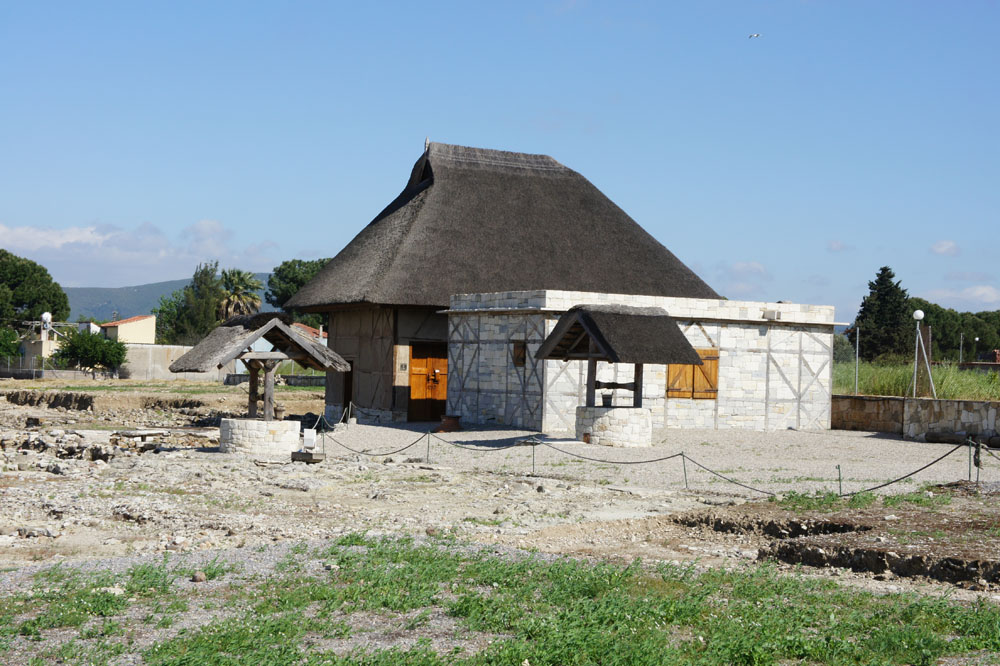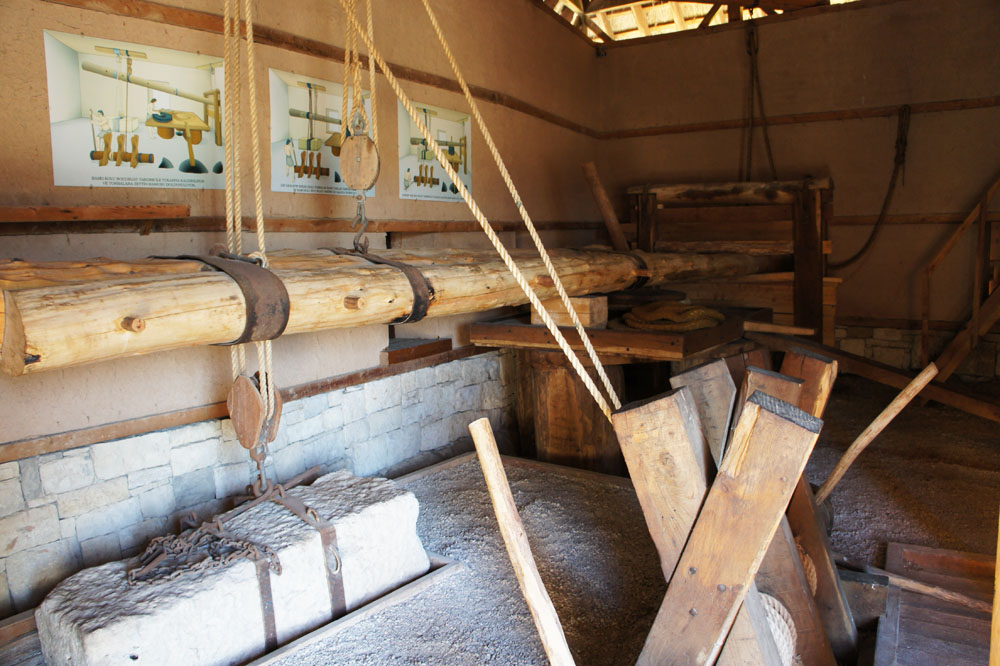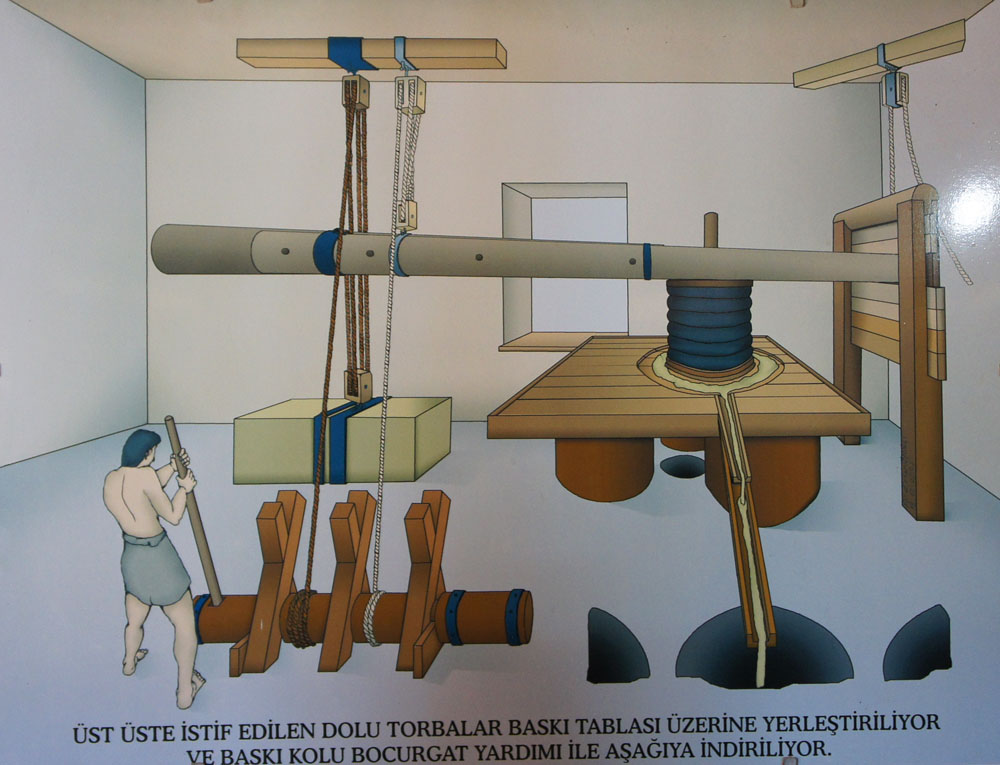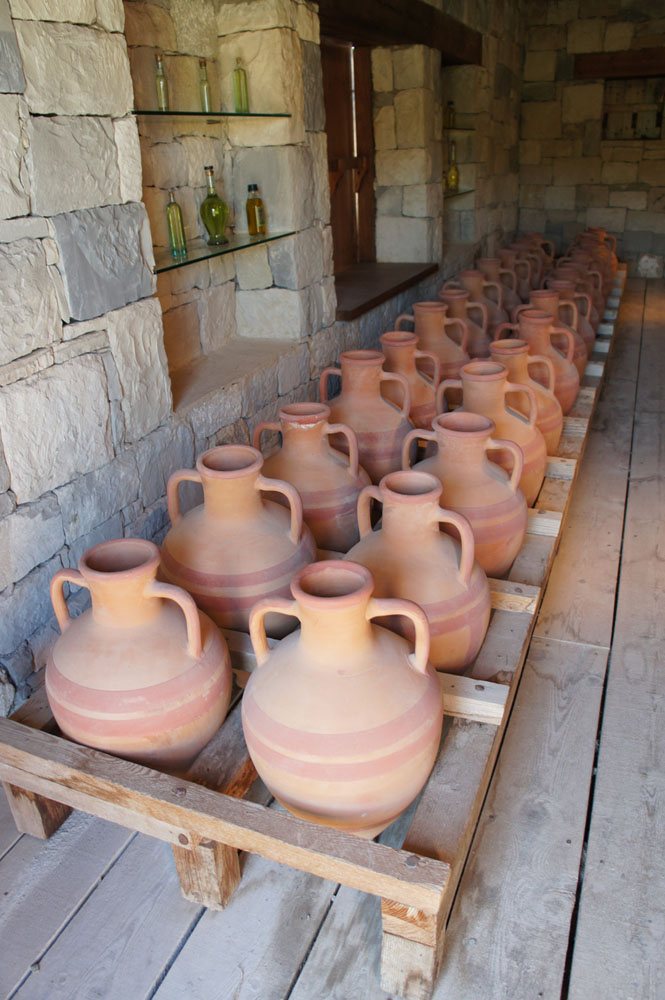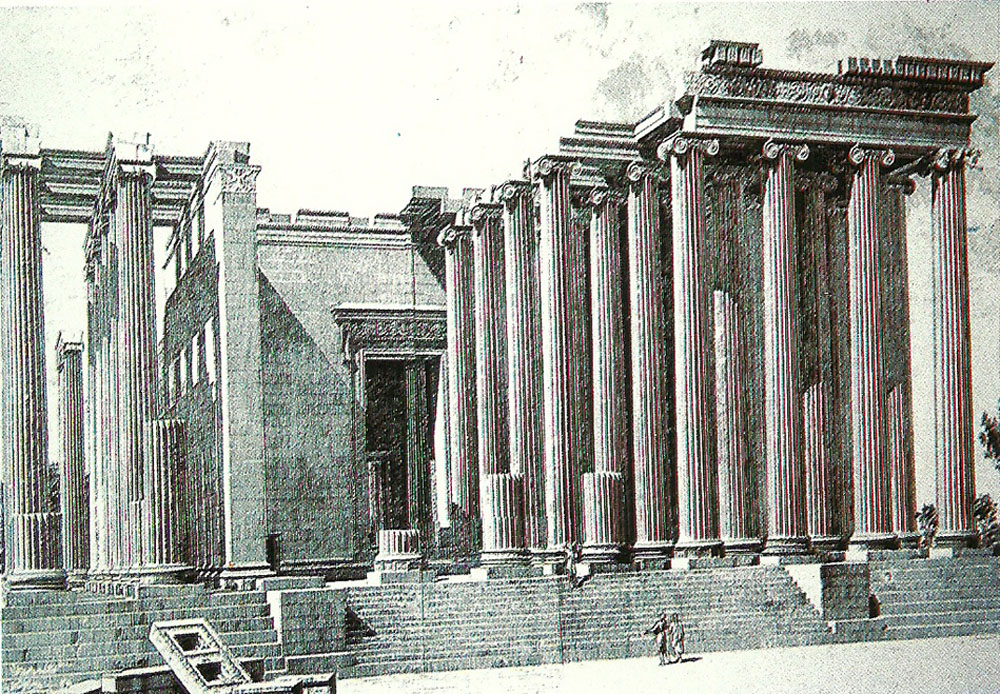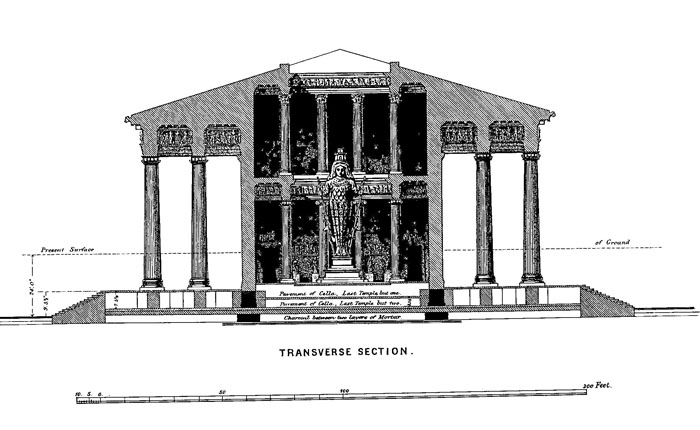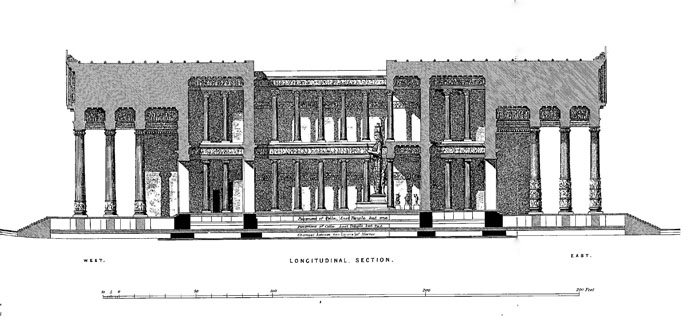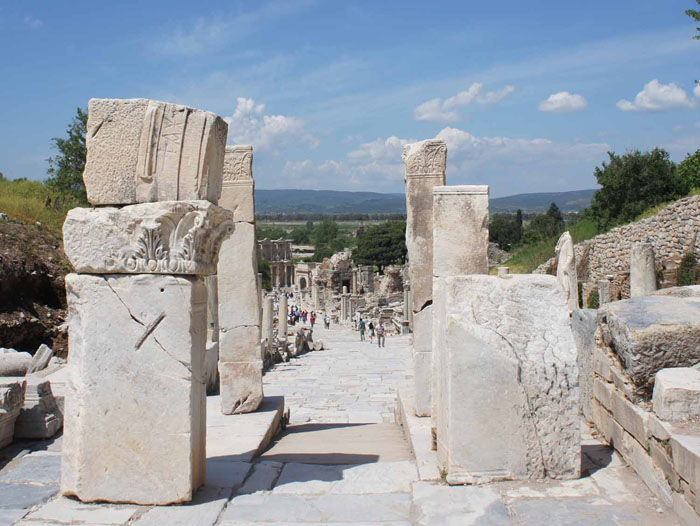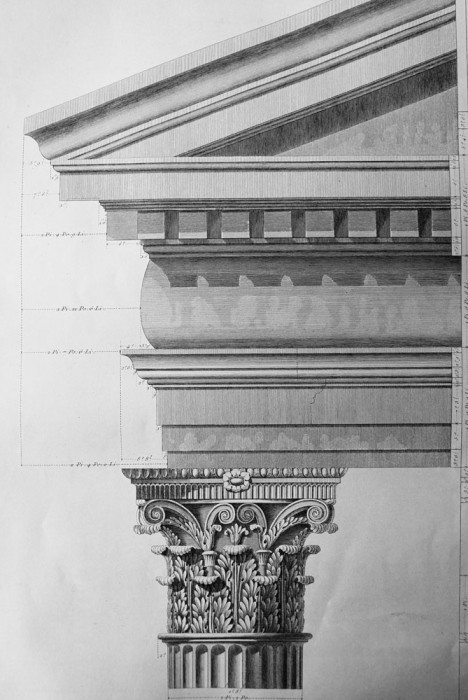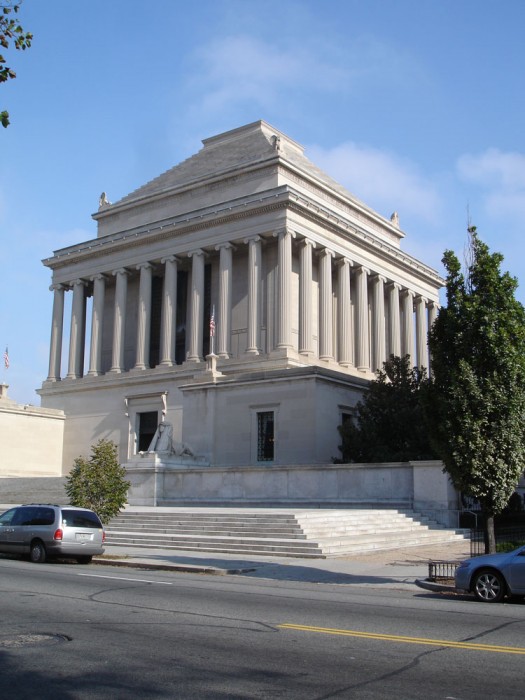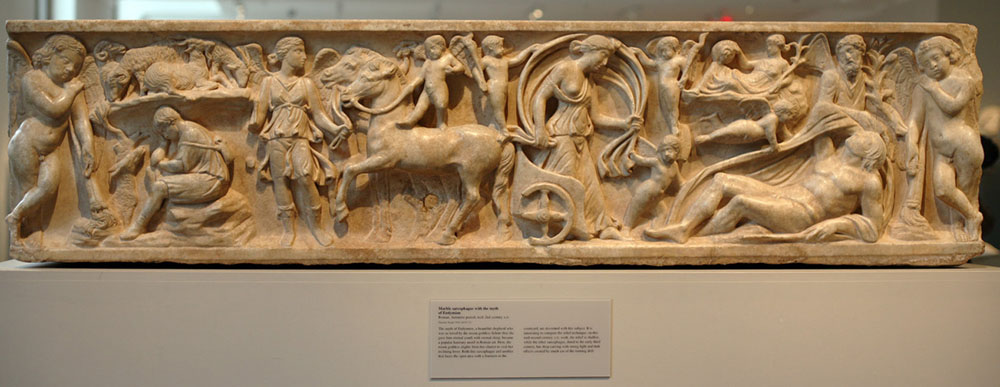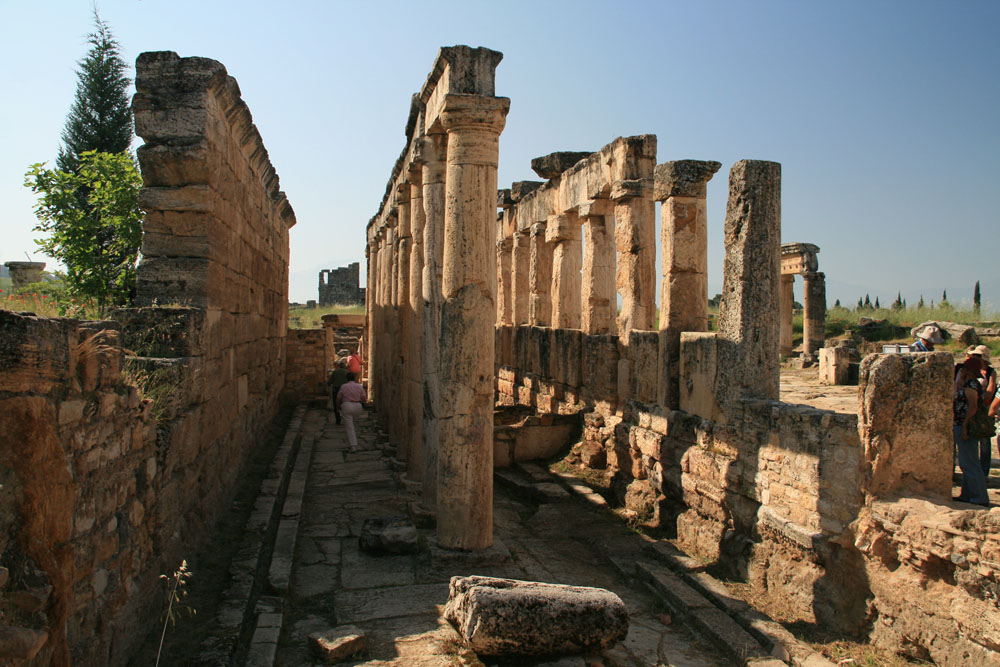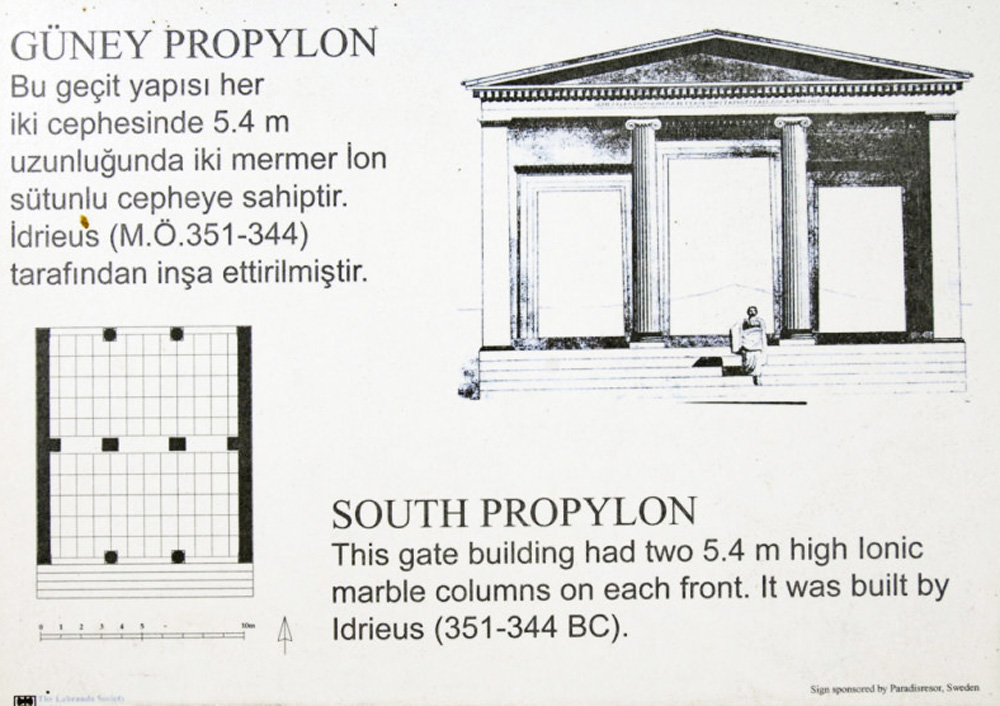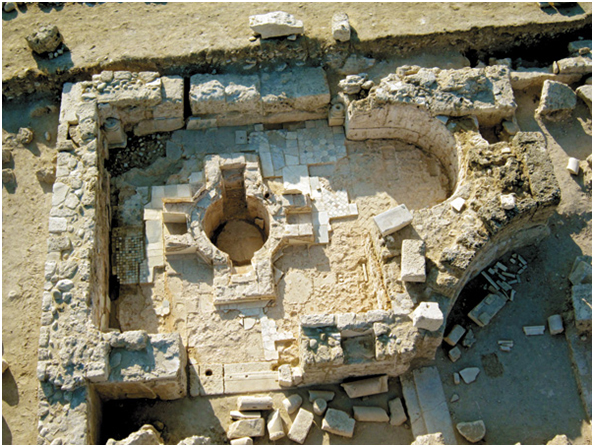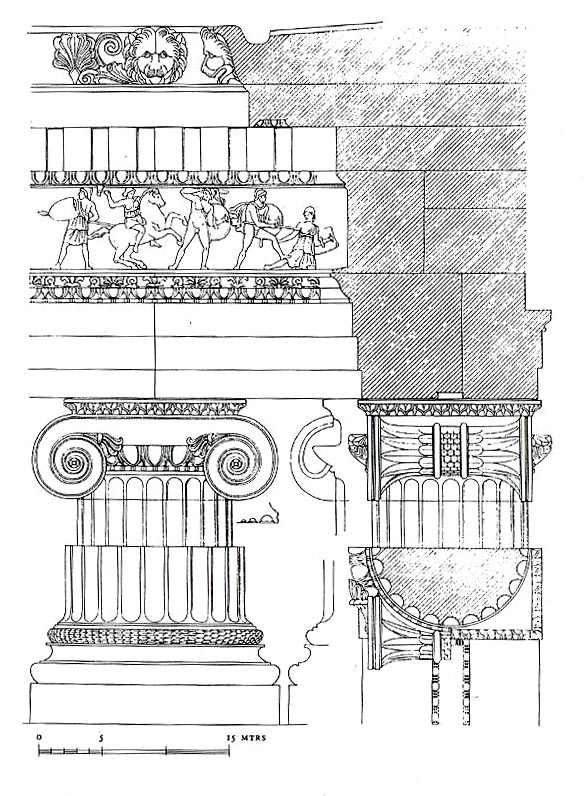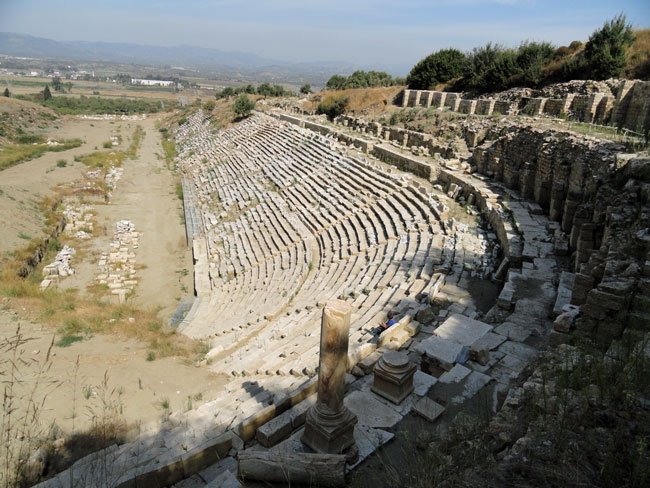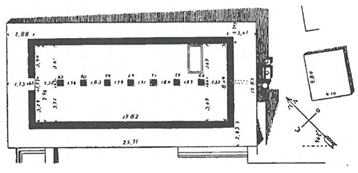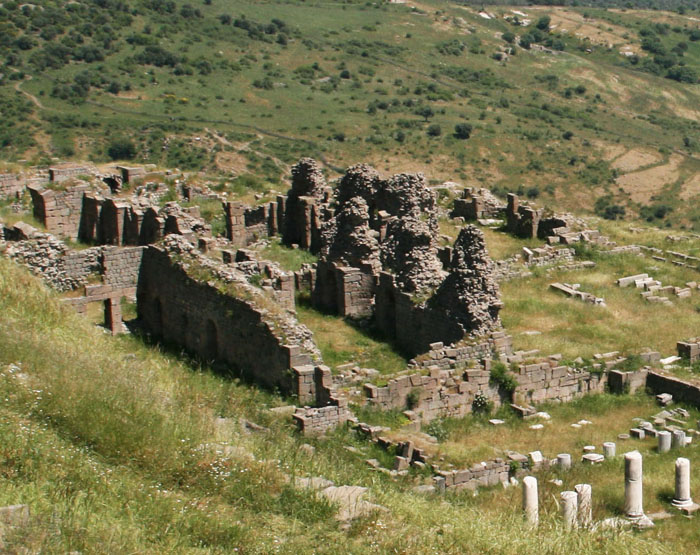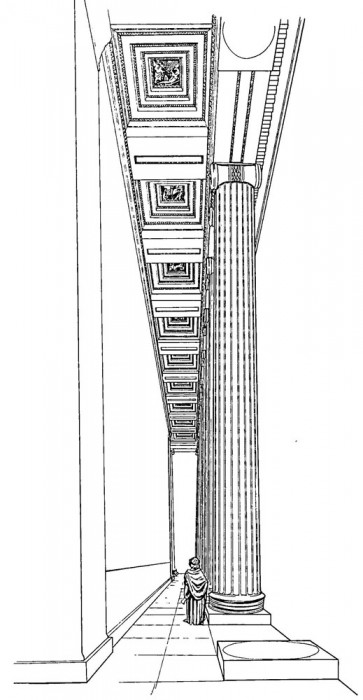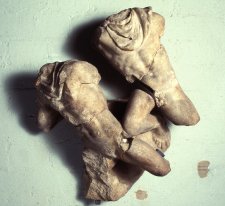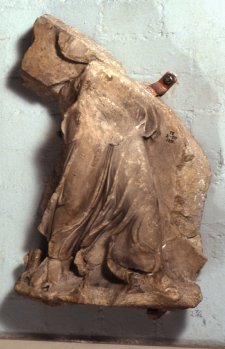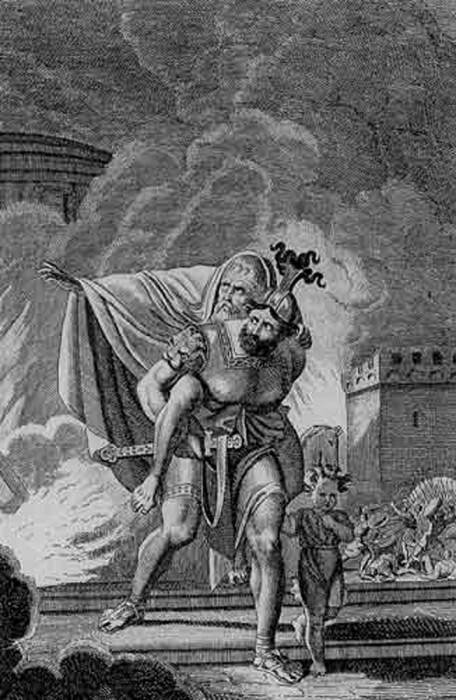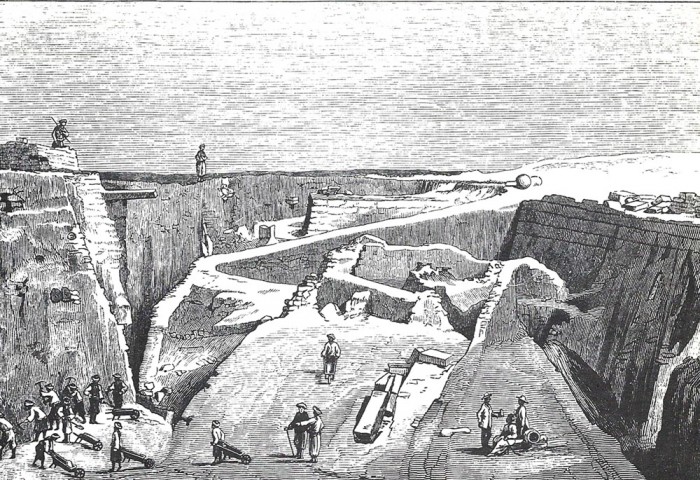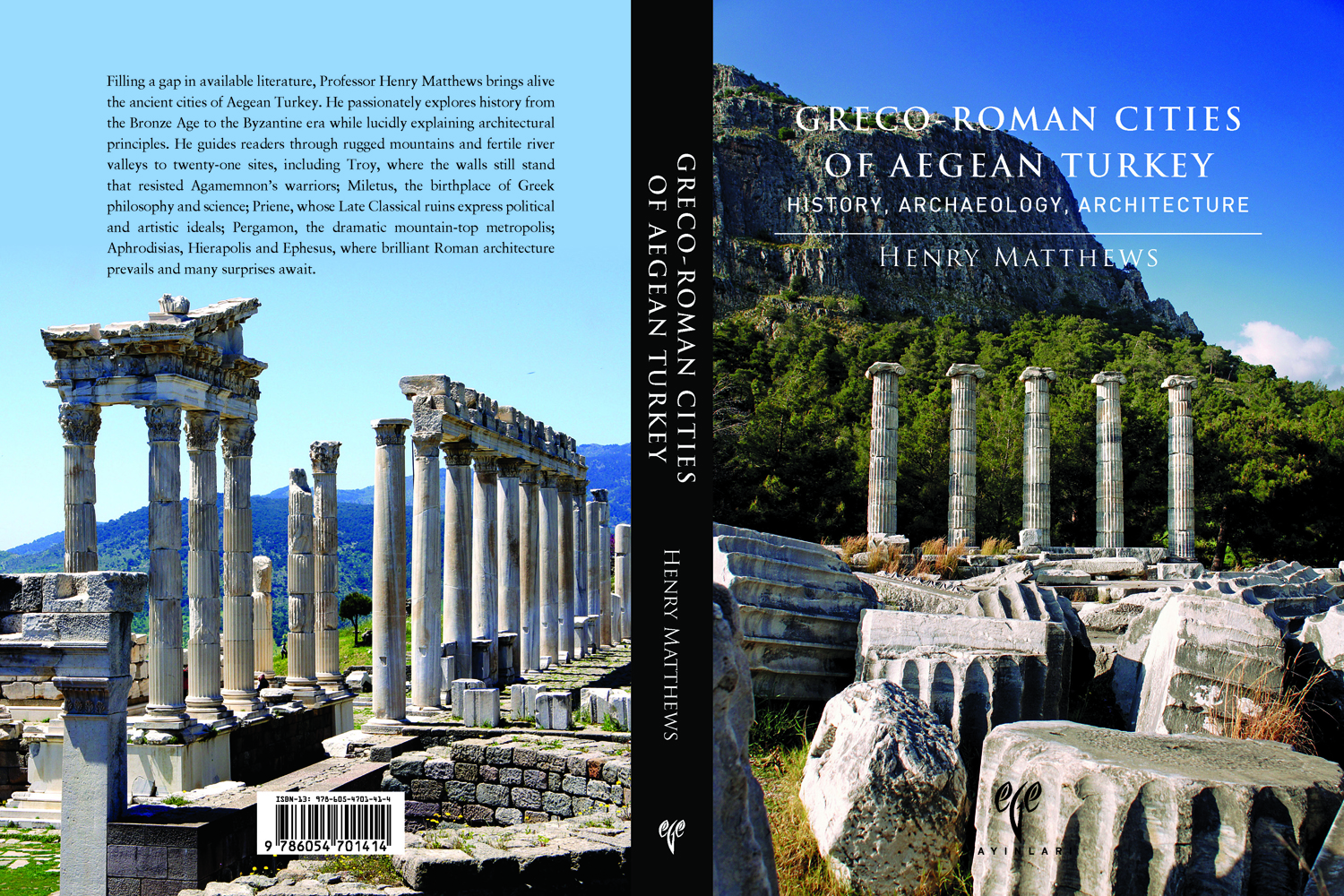
Greco-Roman Cities of Aegean Turkey fills a gap in available literature: it brings the ancient cities of this beautiful region to life. Travelers using the book as a companion will easily grasp the complex social and political history from the Bronze Age to the Byzantine era and discover the achievements of their citizens in philosophy, science, medicine and the arts. They will also find lucid descriptions and explanations of the architecture. General readers, and those planning trips in the future, can use the photographs, city plans and drawings to visualize the sites.
Greco-Roman Cities of Aegean Turkey, Ege Publishers, Istanbul 2014
ISBN- 13: 978-605-4701-41-4
Content
308 color photos, the majority by the author; 4 black and white photos; 27 maps and site plans; 43 drawings; chronological table & migration map; glossary, further reading
Buying the book:
- Request at your local bookstore.
- Directly from the publisher www.zerobooksonline.com On this website please enter Matthews in the search site box on the top left. Price €22 including surface mail world-wide. Best value
- From the distributor in the United States www.isdistribution.com. On this website Please enter Henry Matthews in the quick Search box.
- Directly from this website. Price $30 including postage. Only to addresses in the USA. Use Paypal button below.
Table of Contents
General map,
Author’s NoteIntroduction
What does Greek and Roman Culture mean to us?
The extent and character of the Hellenic World.
Architecture and Townscape.History
The Bronze Age (ca.3000-1100 BCE)
The Dark Age (ca.1100-800 BCE)
The Archaic Era (ca. 800-500 BCE)
The Aeolian and Ionian Leagues.
Government and Politics
Lydian and Persian Rule (585-466 BCE)
The Classical Period (500-333 BCE)
The Peloponnesian War (431-404 BCE)
Alexander the Great and the Rise of Macedon.
The Roman Empire (33 BCE -395 CE)
Judaism and Christianity
The Byzantine Empire (395-1453 CE)
Greek Religion and Mythology
Architectural Principles and styles
City Planning
Visiting the sitesThe cities, arranged in a north south sequence
Troy, Alexandria Troas, Chryse, Assos, Pergamon, Smyrna (Izmir), Teos, Clazomenae, Sardis, Hierapolis, Laodicea on the Lycus, Aphrodisias, Ephesus, Magnesia on the Maeander, Priene, Miletus, Didyma, Herakleia under Latmos, Euremos, Labraunda, Halikarnassos (Bodrum)
Other
Travel Accommodation and Food
Glossary
Credits
Migration Map
Chronological Table
Reviews
Review in CAA (College Art Association) www.caa.reviews.org October 1 2015
Henry Matthews Greco-Roman Cities of Aegean Turkey: History, Archaeology, Architecture Istanbul: Ege Yayinlari, 2014. 370 pp.; 300 color ills. Paper $34.95 (9786054701414)
Architectural historian Henry Matthew’s Greco-Roman Cities of Aegean Turkey: History, Archaeology, Architecture is intended to be an educated layperson’s detailed travel companion to the archaeological sites of western Turkey. Given Turkey’s popularity as a tourist destination for history buffs, it is surprising that such a book has not been written previously. As such, it fills a lacuna and is a welcome addition to the genre of guidebooks in the vein of Freya Stark’s Ionia: A Quest (London: John Murray, 1954), George Ewart Bean’s Aegean Turkey: An Archaeological Guide (New York: Frederick A. Praeger, 1966), Ekrem Akurgal’s Ancient Civilizations and Ruins of Turkey: From Prehistoric Times Until the End of the Roman Empire (trans. John Whybrow and Mollie Emre, Istanbul: Mobil Oil Turk A.S., 1970), and Hilary Sumner-Boyd and John Freely’s Strolling through Istanbul: The Classic Guide to the City (Istanbul: Redhouse Press, 1972). While Bean went off the beaten path as an explorer with firsthand knowledge of classical sites, Matthews instead judiciously summarizes the results of recent research. This much-needed and updated book is a testimony to the intensive period of sustained archaeological work that Aegean Turkey has undergone during the past half-century, and Matthews accurately and systematically documents the immense fruits these labors have born.
The book consists of an introduction and twenty chapters on Greek and Roman cities, and is lavishly illustrated with over three hundred color photographs, architectural plans, restorations, and city plans. The full-page, glossy photographs, many of which Matthews himself took, act as a visual guide to each city’s most important buildings, sculptures, and finds.
Matthews tells the reader that he was drawn to Aegean Turkey because he felt “intense links with the life of the region in ancient times” (11). His introduction is a sweeping and cinematic overview fitting for this beautiful and storied landscape. Individual sections in the introduction—“What Does Greek and Roman Culture Mean to Us,” “The Extent and Character of the Hellenic World,” “Architecture and Towns,” “History,” “Greek Religion and Mythology,” “Architectural Principles and Styles,” and “City Planning”—contextualize the Greco-Roman cities investigated in the rest of the book.
Geography is the organizing principle for the sequence of chapters. Matthews takes the reader from north to south, beginning with Troy and ending at Halicarnassus. Unsurprisingly, the longest chapters are devoted to the major urban centers of Asia Minor with well-established programs of excavation, such as Aphrodisias, Ephesus, Hierapolis, Miletus, Pergamon, Priene, and Troy. Smaller towns like Claros, Mylasa, Notion, Nysa, and Stratonikeia are omitted. This is likely to appeal to the priorities of a traveler interested in the largest, most accessible, and evocative places.
Each chapter begins with an account of the site’s history, rediscovery, and archaeology as well as practical descriptions for visiting the major monuments. The historical overview deals with the complicated power struggles between competing empires and generals before, during, and after the arrival of the Greeks and the Romans. Matthews pays special attention to the array of fascinating indigenous Anatolian and Greco-Roman cults and foundation myths unique to each city. The sanctuary sites of Didyma and Labraunda receive their own chapters. No book on Asia Minor would be complete without examination of the region’s role as a conduit for the spread of Christianity and its thriving Jewish population. Architectural descriptions of early synagogues and accounts of the many famous apostles and martyrs pepper the chapters. As the author of Mosques of Istanbul: Including the Mosques of Bursa and Edirne (Istanbul: Scala, 2010), Matthews clearly understands Turkey as a bridge between East and West and treats the Seljuk and Ottoman eras in equal measure.
The sections in each chapter on rediscovery and the history of early excavations link classical archaeology to European colonialism, and it is a delight to have these histories in a single volume. The thrill of discovery is conveyed in the chapter on Assos by exuberant quotations from European explorers to the city, where subsequent excavations influenced the U.S. architect Henry Bacon’s design of the Lincoln Memorial in Washington, DC. In the chapter on Troy, an account of Heinrich Schliemann’s strong-armed excavations based on Homer’s Iliad, to which Matthews devotes a separate section, is compelling, and it demonstrates how the field of archaeology has developed since the nineteenth century. Up-to-date information on the state of current excavations at each site is also included. In particular, the emergence within the archaeological field of Laodicea on the Lycos, the second largest Roman city in Asia Minor, only within the last decade underscores Turkey’s extraordinary richness in classical ruins.
Chapters read like a veritable who’s who of the ancient world, as famous gods, mythical heroes, kings, princesses, philosophers, poets, performers, architects, artists, and freedmen reappear in their hometowns. Matthews has an ability to bring ancient cities to life, and both Pergamon and Miletus are highlights in this respect. In the chapter on Pergamon, he captures the uncertain times of the Hellenistic period by describing the andesite balls, left onsite at the arsenal, which a catapult siege engine hurled at enemies, providing a striking contrast to the more familiar Attalid thirst for learning and their patronage of Pergamon’s great library. Readers also hear of the physician Galen, who while working in the Pergamene Asklepeion in service to gladiators pioneered significant advancements in medicine. Perhaps the best example to encapsulate one city’s remarkable journey through time is Miletus, which was variously occupied by the Minoan, Mycenaean, and Hittite empires; launched the largest number of colonies of any Greek city; was the birthplace of Greek philosophy and natural science; had a major role in instigating the Ionian revolt to overthrow yoke of Persian rule; produced Hippodamus, the father of rational city planning, and Isodorus, an architect of the Hagia Sophia in Constantinople.
Matthews’s primary goal—“to make architecture accessible and enjoyable” (7)—is achieved as he guides the reader through the standing remains, offering practical advice and suggestions for the best routes of exploration. Most of the attention is paid to Roman-period civic monuments, which were funded by the patronage of emperors and wealthy local aristocrats, but domestic architecture also receives its due. Original vistas are verbally recreated so that readers can visualize the splendor of Greco-Roman architecture and understand how the ancient inhabitants would have experienced their cityscapes. Matthews serves both a general audience and professional archaeologists well when he discusses current techniques used in conservation and anastylosis (rebuilding), helping the visitor understand the need for sustainable tourism and make sense of the modern stainless steel and glass structures, exemplified at Ephesus’s Terrace Houses, as the agreed upon solution for preservation.
He also highlights the region’s famous marble-carving traditions, reuniting virtuoso sculptures now in Turkish and European museums with their original architectural settings. He provides information on visiting local museums, especially those physically located within an archaeological park. Since much of the artwork referenced throughout the book is housed in the Istanbul Archaeological Museum, its inclusion as the subject of a separate chapter would have been an added bonus.
One criticism that might be made of this book is that the historical narrative is based primarily on literary sources and recounts a somewhat traditional point of view. Recent scholarship on classical urbanism, art, and architecture has incorporated a much wider range of available evidence and methods, and offers a more complex view on the results of cultural exchange in this multi-ethnic region. Throughout the book, some of these nuances are lost. For example, it is a mistake to call the Greek and Roman hybrid form of the bath-gymnasia, unique to Asia Minor, “thermae,” a complicated term itself, reserved for luxuriously appointed private or imperial public baths in Rome (Garrett G. Fagan, Bathing in Public in the Roman World, Ann Arbor: University of Michigan Press, 1999, 14–19). Ongoing debates such as these are glossed over or not mentioned at all. Specialists will find some of Matthews’s interpretations bereft of the anthropological, theoretical, and scientific perspectives provided by recent and exciting developments in postcolonial theory, regional survey, archaeobotany, and geoarchaeology. Yet the book was never intended as a summation of the state of the field; as a result it capably fulfills its aims and is an important contribution.
The end matter includes a glossary, index, and texts for further reading. A brief and practical guide to transportation, accommodation, and food pithily condenses the joys of travel in Turkey.
The last pages are a folded map of Bronze Age and Archaic migration along with a historical timeline that covers prehistory to the Byzantine Empire.
More than a guidebook, Greco-Roman Cities of Aegean Turkey is for readers interested in broadening their horizons on the classical world. It is also appropriate for use as a reference book in undergraduate courses on Greco-Roman urbanism and architecture. I hope Matthews will follow up on the Greco-Roman sites of central and southeastern Turkey in similar fashion to Bean’s series, Turkey Beyond the Maeander: An Archaeological Guide (London: Ernest Benn, 1971), Turkey’s Southern Shore: An Archaeological Guide (London: Ernest Benn, 1968), and Lycian Turkey: An Archaeological Guide (London: Ernest Benn, 1978). Until then, the interested traveler will have to wait for news of the flourishing archaeological activities happening beyond the Aegean.
Leah Long
Assistant Professor,
Department of Art History,
Virginia Commonwealth University in Qatar
Review in Cassone at www.cassone-art.com December 2014
GRECO-ROMAN CITIES OF AEGEAN TURKEY: HISTORY, ARCHEOLOGY, ARCHITECTURE
HENRY MATTHEWS
Istanbul: Ege Yayinlari, 2014. ISBN 978-605-4701-41-4.
308 color photos, the majority by the author; 4 black and white photos; 27 maps and site plans; 43 drawings; chronological table & migration map; glossary
Architectural historian Henry Matthews has written a comprehensive account of the Greco-Roman cities of the Aegean coast of Turkey that permits general readers to broaden and deepen their understanding of the classical world. Although art historians will have a general familiarity with the cities of Pergamon, Ephesus, or Halikarnassos, the text also details the beauty and importance of sites that fewer people know about, but are equally rich in history and architectural remains. Matthews, a professor at the University of Washington, not only traveled repeatedly to all of the sites, but also took the photographs that make the book not only a scholarly but a visual treasure. The author of the Mosques of Istanbul (2010) he is deeply versed in the culture of the region from both a western classical and eastern perspective.
This is a guide in the very best sense: the visitor to these sites will come not simply as a tourist, but someone prepared to understand how the architecture relates to place and time. As Matthews writes in his author’s note: “My goal is to clarify the complex political and social history of the region and bring the architecture of [over] twenty cities to life in as much detail as the reader can absorb while visiting.” (7). The book is judiciously edited so that the reader is not overwhelmed by the wealth of information contained in the descriptions of the 21 sites along the Aegean coast.
The Introduction asks what may seem to be an obvious question, but is pertinent to our instagram culture: “What does Greek and Roman Culture mean to us? When one finishes the book, the answer has become clear; the architectural history he relates not only details the scope of Greco-Roman civilization from the Prehistoric era to the Christian world, but provides the context for that of western Europe and America as well. His numerous examples make this clear; I will cite just one: in his chapters on Priene and Halikarnassos, Matthews discusses the work and writing of the Greek architect Pytheos, who was unknown to me, despite my art historical credentials. Matthews cites his influence on the Roman architect and theorist Vitruvius, whose Ten Books on Architecture was an important source in turn for the Italian Renaissance and continued on through 19th century neoclassicism.
Such examples support Matthews’ argument that our knowledge of Greek and Roman civilization is incomplete without including what is now Turkey. That history is very complicated, but Matthews carefully guides the reader through a complex maze of historical events, mythology and successive archeological excavations via clear organization and vivid writing. The Introduction summarizes classical history from the Bronze Age to the Byzantine Empire, explicating the Aeolian and Ionian colonizations, as well as the major events and figures of each era. The reader can return to these helpful summaries or to the indispensible chronology & migration map in the folded endpaper when learning about the individual cities. The Introduction also includes a summary of architectural principles and styles that is helpful not only as a reminder of terminology but also as an explanation of the social function of building types. Again, the helpful definitions in glossary reinforce the information in this section.
In the following chapters, the city-by-city ‘tour’ proceeds from north to south: Troy, Alexandria Troas, Chryse, Assos, Pergamon, Smyrna (Izmir), Teos, Clazomenae, Sardis, Hierapolis, Laodicea on the Licos, Aphrodisias, Ephesus, Magnesia on the Maeander, Priene, Miletus, Didyma, Herakleia under Latmos, Euremos, Labraunda, Halikarnassos (Bodrum). Each section provides a history of the site, a fascinating narrative of its rediscovery and excavation, and, finally, advice about visiting. The latter is important even if one has no immediate travel plans, as the maps, supplied by archeologists some of them color-coded to historical period, are augmented with suggested routes through the sites. Both make concrete the historical information provided and help root the images to the specific settings of the sites, so that even if the reader never is able to travel there, she felt she has walked through these ancient cities.
In every city, history and myth are intertwined, and one of the strengths of this text is that Matthews does not oppose the two, but while conceding that much of what we would want to know may either be shrouded in myth or simply lost, in fact current research has tended to confirm mythological narratives. I will provide Miletus as an example that will stand for the other 20 cities. The first city in Anatolia to be colonized by the Greeks about 1700 BCE, Miletus was said by legend to have been founded by a Minoan who fell out with King Minos. This founding myth has been disputed, but in the 1990s, Matthews writes, “German archeologists Barbara and Wolf-Dietrich Niemeier…found conclusive evidence of occupation by Cretans.” Among their findings were walls built in a Minoan technique, pottery and kilns of a Minoan type and some examples of Linear A writing. The reader participates in the thrill of similar discoveries throughout this text, even as she must grieve all that has been lost to invasion and destruction.
A second Milesian colonization occurred in the archaic period, this time most likely from Athens; Miletus in turn colonized cities throughout the region and became wealthy through trade. Among its valuable exports were textiles, and we are supplied with a delightful example of ‘purple cloth coloured with Tyrian purple dyes made from rotting mollusks.’ By the 6th century Miletus was the ‘leading city in the Greek world,’ the birthplace of Greek philosophy and natural science. Although the city was completely destroyed by the Persian invasion led by Darius in 494/3, it was rebuilt on a grid by the philosopher/architect Hippodamus, whom Aristotle named ‘the father of city planning.’ We then follow the fortunes of the city through the Roman and Byzantine periods, during which another prominent architect emerged: Isidorus of Miletus, who with Anthemius of Tralles designed Hagia Sophia. A detailed description of the extensive ruins and sculptural remains follows, with a beautiful panoramic photograph mirroring the quite breathtaking scope of the history.
I hope that this very brief example provides some sense of the richness of this book. The reader learns not only about the cities’ histories but also the scholars and researchers who have contributed to our current knowledge. (The generous Matthews even manages to give some credit to Heinrich Schleimann’s generally disastrous excavations at Troy.) Between the drawings of archeological reconstructions and the photographs of the current sites, the past and present are negotiated to bring history to life. More than a guidebook, this text is useful for anyone interested in the history of western civilization and would be an appropriate supplement to art history courses. For those who wish to pursue this fascinating history further, Matthews has created a website adding additional reconstruction drawings and photographs, as well as links to archeological websites.
Pamela Allara
Associate professor emerita,
Brandeis University
Readers’ Comments
Just wanted to let you know that Greco-Roman Cities of Aegean Turkey
made my recent trip to Turkey amazing, and I thank you for putting
together an incredible resource. It really helped me better understand
what I was looking at (Ephesus, Hieropolis, Aphrodias), and how they fit
into the larger context of the ancient world.
Peyton Bowman
Having just purchased a copy of your recent book I thought I would contact you to let me know how much I enjoyed it. As a frequent visitor to the archaeological sites of Western Turkey I have long been frustrated by the lack of an authoritative guide to the ancient cities. I have copies of all of George Bean’s works but although excellent they are, of course, seriously outdated. All I have managed to purchase whilst in Turkey are the ubiquitous picture books with poor translations. Your recent book certainly fills a yawning gap in the available literature and I hope it achieves the success it deserves. The historical background, thorough descriptions of the sites and excellent illustrations and plans make it a delight to read.
Last week I was in the Antalya region, based in Side, and took the opportunity to visit Perge, Aspendos, Termessos and a few smaller sites. I am sure you are familiar with this area. It occurred to me given the healthy number of tourists at these sites whether you had given any consideration to another book on the Mediterranean Coast? I took with me Bean’s “Turkey’s Southern Shore” but found precious little available locally. Nothing at all at Termessos. I appreciate the vast effort involved in producing a book like the one on Aegean Turkey but could guarantee you at least one sale!
Anyway, my grateful thanks once again for writing a book that I will no doubt use extensively in the coming years.
John Saul, West Yorkshire, UK.
I’ve just become the proud owner of a copy of your handsome and invaluable guide to Greco-Roman cities.
David Parker UK
Amid heartbreaking reports of ISIS devastation of archeological treasures, Professor Henry Matthews’s new book provides a timely and eloquent introduction to Greco-Roman civilization as revealed in the principal ancient cities of Aegean Turkey. This compact book brilliantly blends history, culture, geography, and architecture with magnificent color photographs, maps, and site diagrams. This book is an indispensable resource for travelers (arm chair or actual) as well as anyone concerned with preserving the world’s cultural heritage.
Rutherford Platt, Professor Emeritus, University of Massachusetts
Any tourist interested in the remnants of Greek civilization or the Roman Empire will end up in Turkey. The problem is that there is too much, with structures of different cultures competing for our confused attention. Your book – Greco-Roman Cities of Aegean Turkey – sorts it out with enough history and architecture to explain each site in a nice clear format that keeps it all accessible. There’s nothing available in English (maybe not in any language) that approaches it as a useful guidebook for the region.
Alec Fisken, Seattle
Photo gallery
A selection of Photographs and Drawings from Greco-Roman Cities of Aegean Turkey
Additions to greco-roman cities of aegean turkey
When I was preparing this book for publication, it was necessary to reduce the number of illustrations and shorten the text. The weight and cost of the volume would have been excessive without some omissions, but I decided to replace some of the missing material on a website. As time goes on I plan to add details of the latest discoveries as well as additional photographs and links to websites.
Please be patient. I have just made a sample post. More will follow.
REFLECTIONS ON AEGEAN TURKEY AS A MICROCOSM OF THE WORLD
One evening after an inspiring day at Priene, when the ruins of the ancient city seemed to come to life in my imagination, I was sitting at an open air table with friends, enjoying wine and mezes, the traditional Turkish appetizers. We savoured delectable contrasts of colour, texture and flavour and were glad to know that all the ingredients had been produced nearby. Then, with pride, the waiter brought us kebabs of lamb marinaded with pungent herbs. We realized that feasts like this had been served here for thousands of years, stimulating animated conversation. Our own discussion turned to the role that the Greek cities of Aegean Turkey played in world history. As we lingered over our dinner, we agreed that in ancient times, Aegean Turkey was a microcosm of the world.
We talked about the time long ago when this was a pristine land between a sea teeming with fish and fertile ground where crops, cattle and horses thrived, where sheep and goats grazed on mountain slopes. The first Minoans and Mycenaeans to arrive in the second millennium BCE must have seen it as a paradise when they eagerly settled here. It is no wonder that Greeks from Athens, Thebes and other city-states set out later to form colonies in the most favourable sites with safe harbours. They came with political ideals and a desire to create beautiful cities. Over the years they built some of the most elegant and sustainable urban environments that have ever existed. They developed progressive political systems and institutions. They honoured their gods, making sacrifices to them and erecting great altars and temples, but they also searched for truth as they delved into natural philosophy. Maritime trade and agriculture sustained them; philosophy, art, architecture, music and literature flourished. Tragically, their success created envy. So, again and again, powerful and greedy neighbours, the Hittites, Galatians, Cimmerians, Lydians, Persians, Macedonians and Romans invaded. Sometimes the cities were almost completely destroyed, the men slaughtered and the women enslaved. In other cases new tyrants, who took power after a city-state had surrendered, grasped the economic rewards as well as prestige. Some conquering rulers allowed their new subjects a measure of independence; others displayed their power, subjugating them brutally. All of them levied taxes on the citizens and demanded soldiers for their armies.
The Greek experiment of the polis found expression in fine architecture and civic institutions. There were periods when the citizens could live in peace for a few decades or even centuries, but inevitably their dreams and everyday lives were cut short by the actions of powerful, arrogant, pitiless rulers desiring only their own aggrandizement. All the ancient cities of Aegean Turkey now lie in ruins. To add insult to injury, the fortifications and buildings have served as stone quarries exploited for new construction elsewhere. Nature has also played a part. Rivers changed their courses, inundating settlements; they have also silted up their estuaries, leaving cities that depended on maritime trade miles from the sea. With devastating suddenness earthquakes took their toll, toppling tall columns and reducing ancient homes and civic buildings to ruins.
Such a pattern of creation and destruction has recurred worldwide throughout history and continues today. While farmers, traders, artisans, philosophers and artists have done their best to continue their work, aggressive warriors have often been elevated to the status of heroes. Empires have risen and fallen; great cities have faced disasters. I hope, as you read the historical narratives in this book and experience the physical remains of the places you see, that the spirit of the people who lived in them, from slaves to artists, philosophers and civic leaders, will come to life in your minds.
Introduction
Alexandria Troas
Only eight Kilometers from Alexandria Troas, the hard-to reach city of Neandria, was not included in this book. For information, click below on the link for Neandria
Aphrodisias
ASSOS
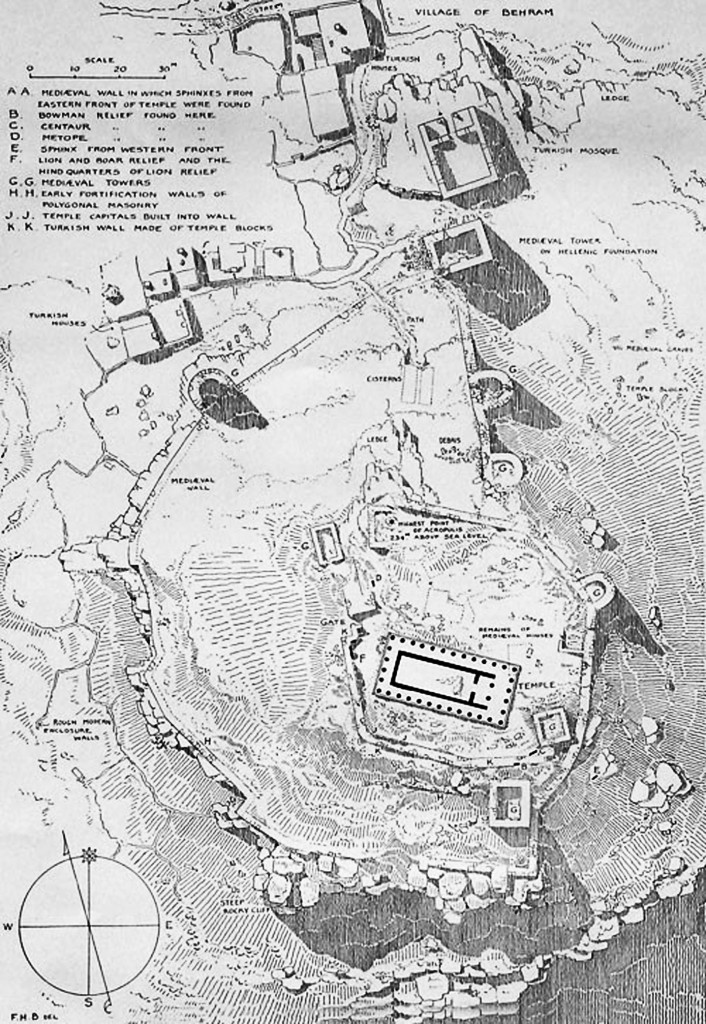
Plan of the highest level of Assos, showing the Temple of Athena and the Mosque

Temple of Athena, elevation by Francis Bacon
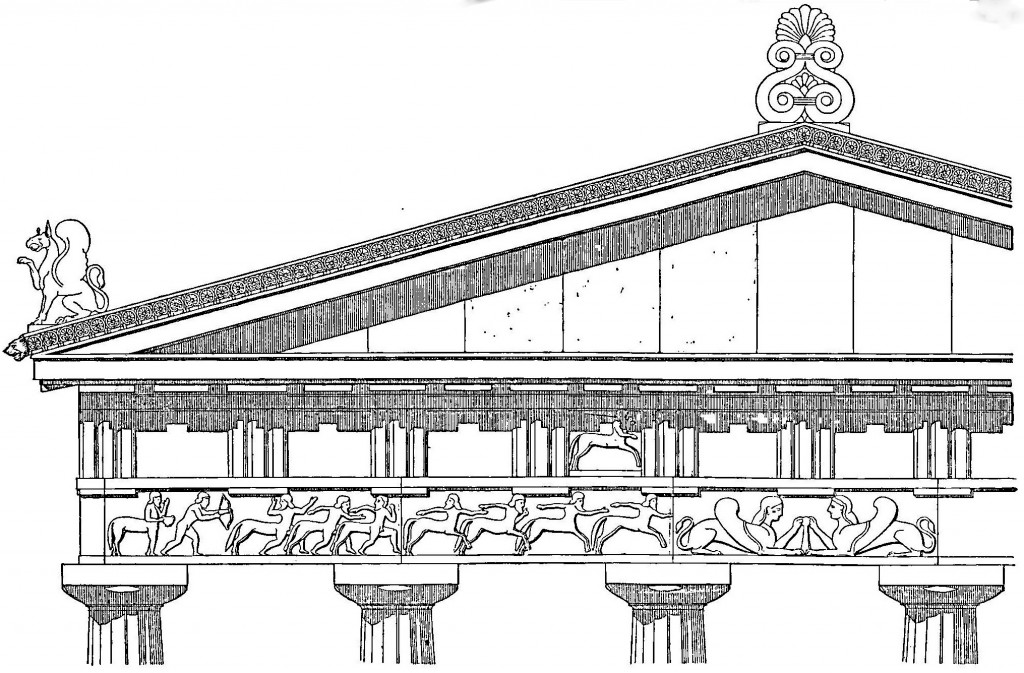
Temple of Athena. detail of the drawing by Francis Bacon. The architrave of the Doric temple was normally plain. The low relief sculpture on the architrave at Assos is unique.

Temple of Athena detail of frieze: Heracles pursuing centaurs drawing by Francis Bacon. Greek sculptors normally depicted centaurs with hooves like horses. Their human feet are unusual.
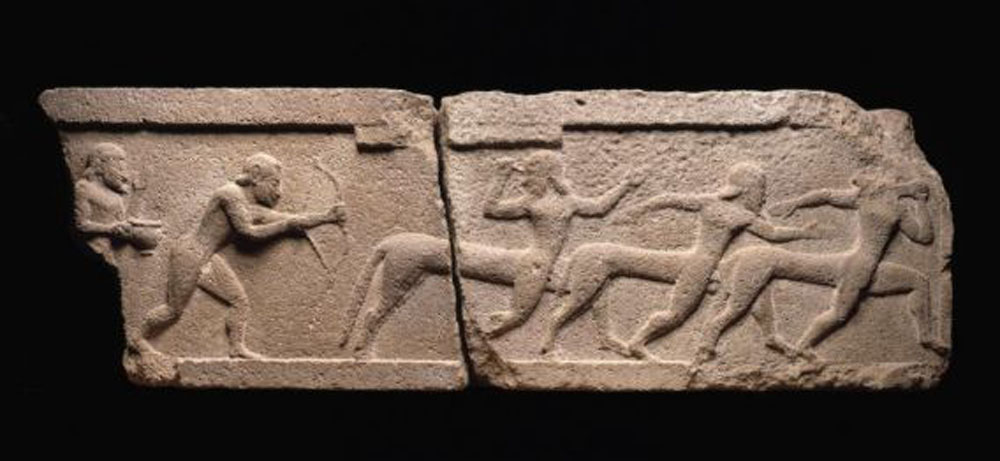
Temple of Athena, detail of Frieze on the architrave (Boston Museum of Fine Arts)

Temple of Athena, detail of frieze on architrave. Figures reclining at a symposium (Louvre, Paris)
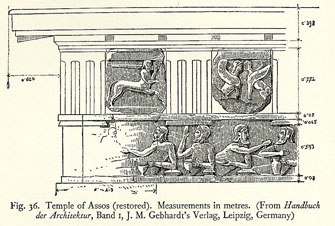
Temple of Athena drawing of the entablature including metopes representing a centaur and sphinxes and a symposium frieze on the architrave
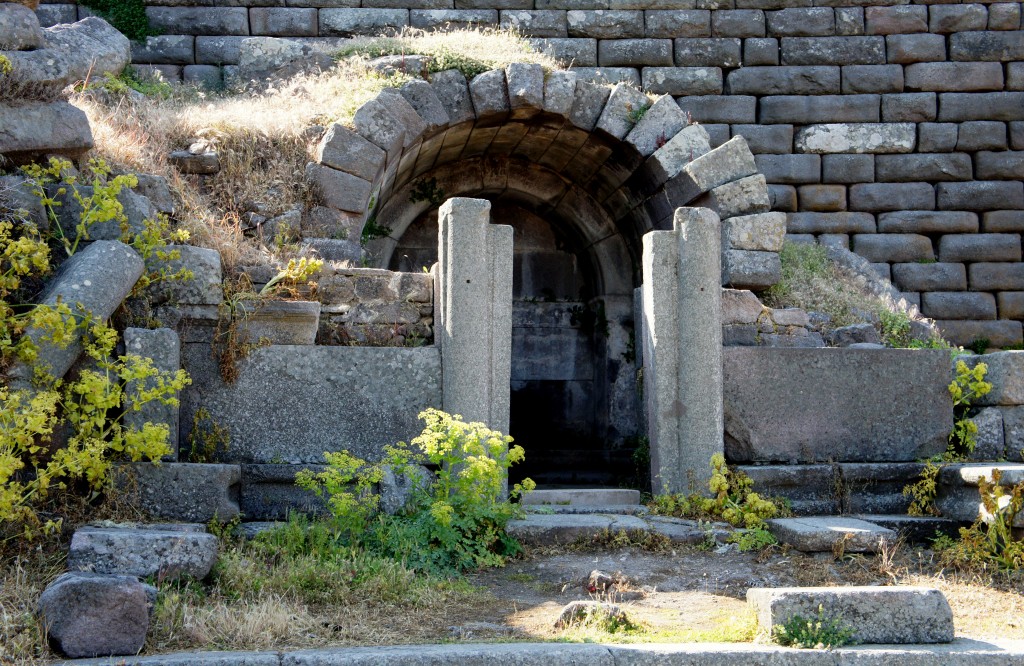
he tomb of publius Varius in which Francis Bacon ate his lunch during the excavations
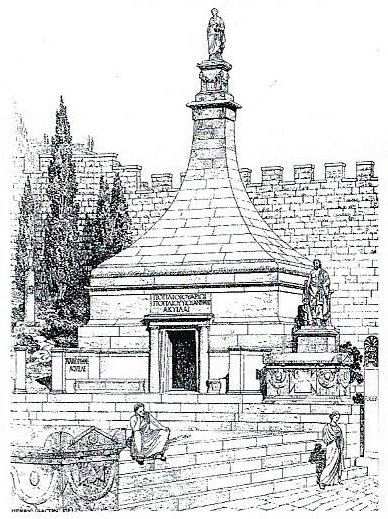
Reconstruction of the tomb of Publius Varius by Francis Bacon

Barrel vaulted interior of the tomb of Publius Varius
Chryse
Clazomene
Didyma
EPHESUS
Reconstruction Drawings of the Temple of Artemis at Ephesus by John Turtle Wood Published in Discoveries of Ephesus, 1877. Hr referred to the goddess by her Roman name, Diana.
Miscellaneous Drawings my Archaeologists reconstructing original appearance
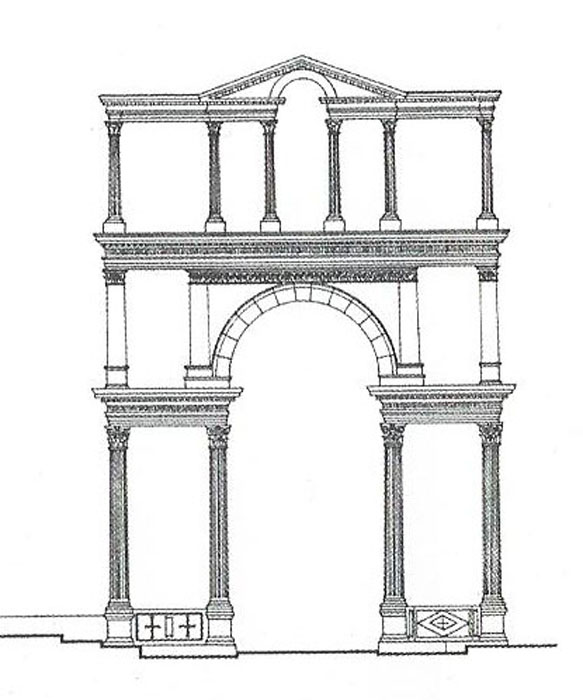
Hadrian’s Gate, elevation (49)
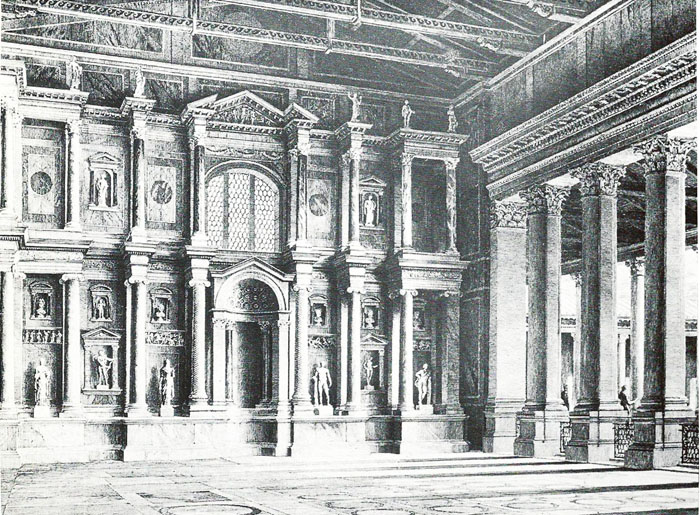
Marble Hall in the Harbour Baths (92)
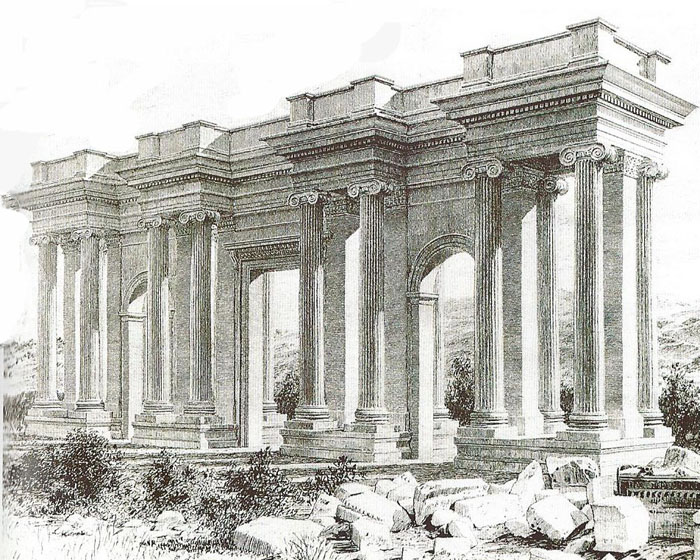
The East Gate leading into Arcadian Sreeet near the Theater (73)
A sequence of views looking north-east down Curetes Street from the Hercules Gate to the Celsus Library (Numbers refer to position on the site plans)
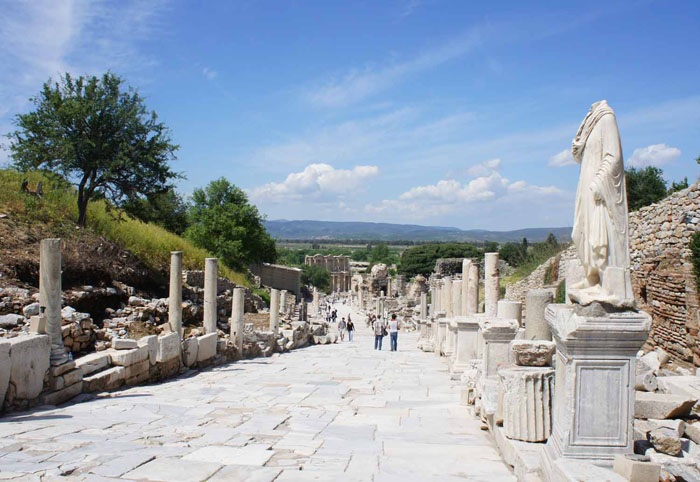
Curetes Street with Celsus Library in the distance
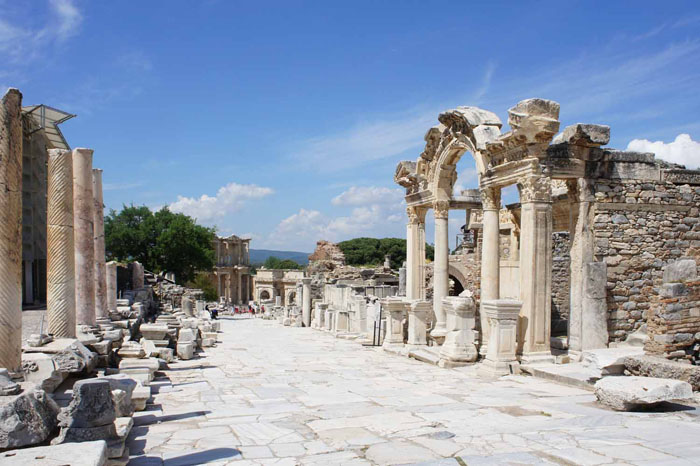
Curetes Street with the Temple of Hadrian on the right. (40)
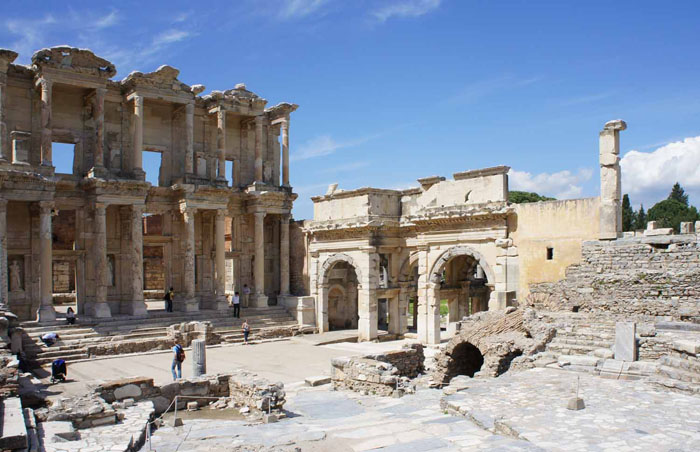
The foot of Celsus Street with Celsus Library and the Agora Gate
Euremos
Halikarnassos
Herakleia
Hierapolis
Labraunda
Laodicea
Magnesia
Miletus
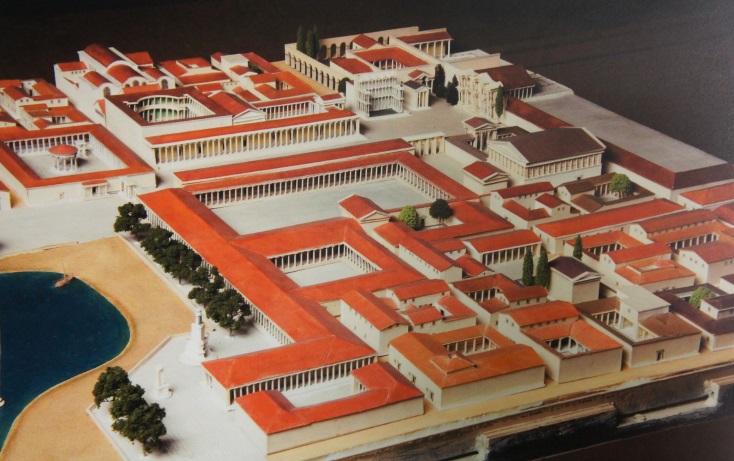
Model of Miletus in the Miletus Museum. The north Agora lies in the center. The Bouleuterion is the tallest structure to the right, The longer row of trees near the harbour conceals the long Harbor Stoa. Behind the stoa were the shops nearest to the harbor. The Harbour monument is just visible in the angle of the stoa,

The column bases are all that remain of the Doric Harbor Stoa. Vestiges of the Harbor Monument can be seen in the background

The Harbor Monument. built to commemmorate the Battle of Actium. Reconstruction by the German Archaeological Institute
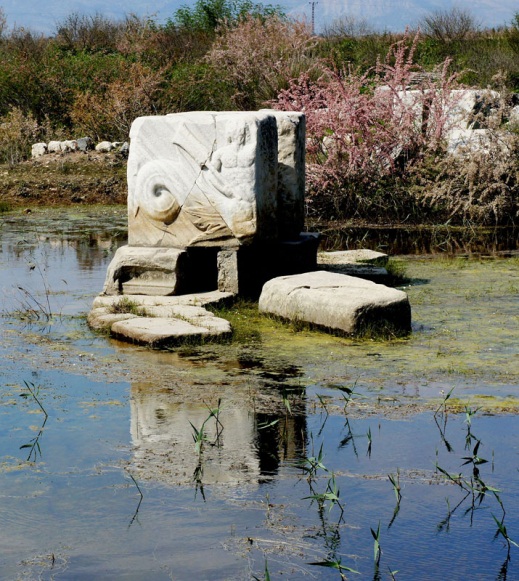
The Harbor Monument. a block carved with the tail of a triton from the frieze of the third level stands on the plinth

The Bouleuterion, reconstruction, German Archaeological Institute. In the court, entered through the Corinthian portico on the left, stood the tomb of an unknown hero. The architecture of the bouleuterion shows a decorative version of the Doric style Four column of the long Ionic stoa in the distance to the left, built by Virgilius Capito are all that survive

Looking south over the Lion Harbor towards the North Agora (right) Beyond the Delphinion, (the square court on the left) the Sacred Way leads past the Nymphaeum to the Market Gate, (far left) Model by the german Archaeological Institute in the Miletus Museum.
Neandria
(L) Aeolic capital, found in the temple of the 6th century BCE (R) Plan of the temple with a single row of comumns along the centre. 4/2 4/3
Neandria, situated high on a ridge eight kilometerss east of Alexandria Troas, once possessed great architectural significance. Robert Koldewey, excavating there in 1889, discovered an archaic temple from the early sixth century BCE with a row of seven columns running down the middle of the cella. This arrangement, awkwardly dividing the space, occurred in a few other archaic temples, including the Heraeum on the nearby island of Samos. It was soon supplanted by temple interiors with broad central spaces, flanked by aisles on both sides, suitable for displaying cult statues. The badly decayed capitals, of a rare type, designated as Aeolic, may have been Egyptian in origin. The volutes spring directly from the shaft, with a palmette motif between them, and two bands of leaves below. Scholars still debate whether this design represents an early stage in the development of the Ionic order.
Remains of impressive fortifications built in the 5th century BCE still survive at Neandria. 3,200 metres long and rising to varying heights They are some of the best preserved in Anatolia. Archaeologists from Münster have found vestiges of houses. No signposts or obvious paths lead to the site, but it could make a rewarding goal for intrepid hikers.
Granite quarries close to Neandria, including one in the village of Koçali supplied completely carved columns for buildings in Rome; a few of them still lie there on the ground.
PERGAMON

The Acropolis of Pergamon recreated in a painting by Friedrich von Thiersch, 1882. The Altar of Zeus dominates the foreground ; on a higher terrace to the right, the Temple of Athena stands in a precinct enclosed by the library; above it the Temple of Trajan crowns the hill. This representation expresses the passion with which German architects appropriated Classical architecture in the 19th century German Archaeological Institute.
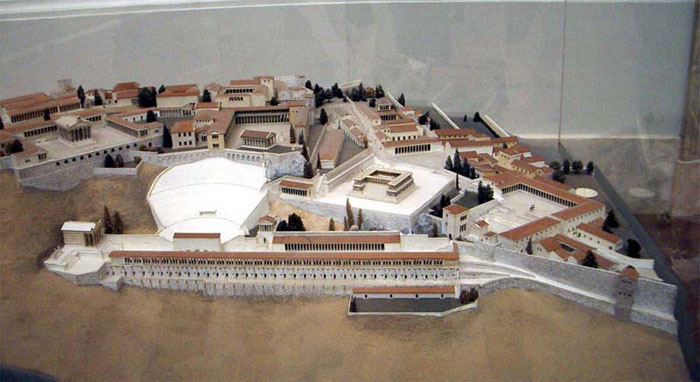
Model of the Upper City in the Pergamon Museum, Berlin

The west end of the Gymnasium with the Western Baths in the distance

A group of women demonstrating the scale of the Temple of Trajan
